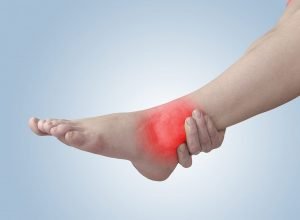
Tendinopathy or Tendonitis
Tendinopathy or Tendonitis
Tendinopathy, previously termed tendonitis is a broad term encompassing tendon disease or dysfunction. Research has concluded that inflammation is not always present in tendon dysfunction and as 'itis' is the suffix for inflammation, the term tendonitis is no longer appropriate. Common tendon injuries include Achilles Tendinopathy (ankle), Patella Tendinopathy (knee), Gluteal Tendinopathy (hip), Rotator Cuff Tendinopathy (Shoulder) and Tennis Elbow (elbow). Read more here.
Tendons attach muscle to bone and consist of tough, elastic, connective fibres. Tendon injuries can occur suddenly (tendon rupture or strain), but are usually the result of repetitive or unaccustomed overloading. Tendons can become painful at any of the sites listed below:
- musculotendinous junction (where the tendon joins the muscle)
- mid-tendon (non-insertional tendinopathy)
- tendon insertion (where the tendon inserts on to the bone)
Causes of Tendinopathy
The most common cause of tendon pain is unaccustomed changes in load. Anyone can injure a tendon, but those who subject their body to new repetitive movements in their jobs, sports, or daily activities are more likely to develop tendon pain. Other changes, such as reduced sleep and stress can also make you more vulnerable to developing a tendinopathy.
Tendons are designed to tolerate large forces and repetitive loading, however, on occasion, when the load is greater than the tendon can tolerate, it becomes stressed. When tendons become stressed, small micro tears and inflammation may result. If adequately rested, the tendon usually recovers relatively quickly. However, continued loading can result in ongoing damage that exceeds the rate of repair. The damage will progressively worsen, causing ongoing pain and dysfunction.
For more information on the importance of load management in preventing tendon injuries, read My Physio Perth's blog on 'injury prevention and load management'.
Signs and Symptoms of Tendinopathy
Tendinopathies typically result in pain, stiffness, and loss of strength in the affected area.
- The pain may increase when you load the tendon.
- You may experience pain and stiffness during the night or when you first get up in the morning.
- The area may be tender, red, warm, or swollen if there is inflammation present.
- A crunchy sound or feeling may be experienced when moving the area.
Stages of Tendinopathy
Tendinopathy injuries have been categorised into three stages, with the correct treatment varying considerably between each stage.
Reactive Tendinopathy:
Reactive tendinopathies occur following a bout of unaccustomed/increased physical activity or a direct blow. For example, a sudden increase in running or a blow with a hockey stick. This stage is more common in relatively young populations and normally results in significant pain and occasional swelling. Reduced load/rest is very important in managing reactive tendinopathies. My Physio Perth's physiotherapists will perform treatment such as massage, dry needling, taping, ultrasound and may potentially prescribe orthotics or splints as required. Your physiotherapist may provide advice on the use of specific anti-inflammatory medications or gels to assist the reactive tendinopathy to settle. Cortisone injections are occasionally performed around the tendon but their use is controversial. It is very important to note that although the tendon pain may settle with rest, it's tolerance to load will not improve without a structured strengthening program from a physiotherapist.
Tendon Dysrepair:
Tendon dysrepair can result if a reactive tendinopathy is not adequately rested. Repeated loading of the tendon prevents a normal healing response and the tendon becomes chronically dysfunctional. In older athletes with less adaptive, stiffer tendons, this stage may develop with lower loading exposure. Modifying exercise and implementing a customised strengthening program are essential in the management of tendon dysrepair.
Degenerative Tendinopathy:
Degenerative tendinopathies are more commonly seen in older populations, but can occasionally be seen in younger athletes with chronically overloaded tendons. The typical presentation is a middle-aged recreational athlete, with a long history of inappropriately managed tendon pain. Degenerative tendons lose structural integrity and elasticity and may have focal swelling and pain. They do not react well to increases in load and may inevitably lead to rupture. Specific strengthening exercises and load management are again essential in reducing pain and improving function. Limited evidence is available for the use of shockwave therapy.
Diagnosis of Tendinopathy
My Physio Perth are experts in the diagnosis and classification of tendon injuries. Your physiotherapist will ask questions about your symptoms and exercise regime. They'll also perform a physical examination to confirm the diagnosis. If your symptoms are severe or you do not improve with early treatment, specific diagnostic tests may be required, such as an ultrasound scan or MRI.
Physiotherapy Treatment for Tendinopathy
Treatment may comprise of:
- Advice on load management and activity modification
- Strengthening exercises
- The establishment of an appropriate return to activity or sport plan
- Soft tissue massage
- Dry needling
- Electrotherapy (e.g. ultrasound, shockwave therapy)
- Stretching exercises
- Advice regarding the use of anti-inflammatory medication
- Ice or heat treatment
- Education
